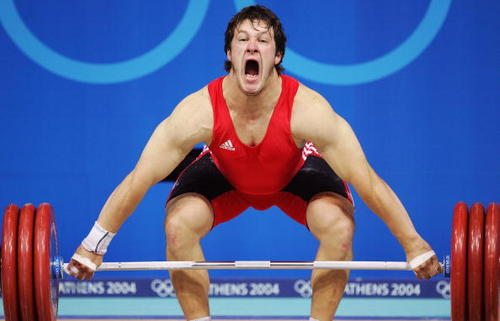Technique, technique, technique! So important I said it thrice. Proper technique ensures efficiency, safety, and proper imprinting on the nervous system. It would be very difficult for me to try to teach proper technique of the classic lifts on a blog, but I can tell you where to look and why.
Head position plays a vital role in proper technique and overall posture. Thrusting the head forward initiates forward momentum while throwing it backward initiates rearward movement. That helps us out a little in weightlifting, but how does it really effect movements? We teach a neutral head position in the starting positions (cue would be look at a spot on the ground four feet in front of you) because flexion of the neck (looking up at the ceiling say) causes a relaxation of the erector muscles of the back. Conversely, exaggerated extension (looking down at your feet) might cause a arching of the lower back which, needless to say, would place the lifter at a bio-mechanically disadvantageous position. Placing the head in such a manner to facilitate the lumbar spine being in placed in a neutral position is ideal.
Perfecting the classical lifts (snatch, clean and jerk) are hard enough as it is, but the lifter must also focus on proper head position at different stages of the lifts. Rotating the head can cause the spine to rotate. Titling the head too soon while pulling from the ground can cause the bar to fly too far away from the body. While looking up at the bar at the bottom position of the snatch or over-head-squat can cause the lifter to fall backward.
Watch what you're doing. Not really. "Action of the eyes is closely related to action of the head, so it is essential to facilitate correct body or limb posture by using the eyes to guide the head into position which is most appropriate for each stage of a given movement. Generally, the neutral spine position is maintained most easily if the eyes are looking almost directly ahead and fixed on a distant object." (Supertraining by Verkoshansky and Siff) Fix the eyes to keep the head neutral to keep the spine neutral.
A drill to help this (and a good drill overall) is to pick a spot on which to focus then close the eyes. This will also enable the lifter to have better awareness of where the body is in space at different stages of the lift.
